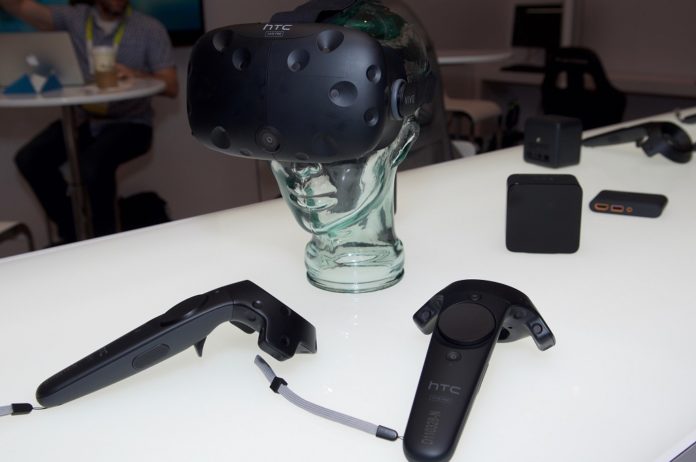We’ve covered why we wanted wireless VR for our VR fitness workouts before. Imagine not tripping over a bundle of cords anymore. Imagine standalone headsets becoming more commonplace. And, imagine experiencing VR with your friends in the same room. We also knew HTC has already been developing the HTC Vive 2.0. Rumor has it that the project, codenamed “Oasis,” will feature wireless support. If this were true, it would not only improve upon the original HTC Vive, which has sold over 140,000 units, but also greatly benefit the VR fitness sphere. While the powers that be don’t have a definite timeline as far as release goes, current predictions say a cordless accessory for the original Vive will come out in 2017.
Setting the Precedent
Sony might have been the first to take VR to the mass market, but that doesn’t mean HTC is out of the competition. Though HTC sells in the high-end market, going untethered implies increased accessibility. A wireless headset would mean set up becomes less of a hassle. It also means a lower dependence on PCs. This increases the number of people who can use VR, and by extension, utilize VR fitness workouts. In a world where two-thirds of people with gym memberships don’t use them, accessibility is important.
If HTC Vive 2.0 does turn out to be wireless, and it’s successful, that might encourage other producers of VR technology to follow suit. There is a gap that divides the accessible yet simple VR apps that only require your phone and the higher-end experiences that need a headset and a PC. Wireless VR would bridge that gap for the consumers.
Not Sacrificing Quality
HTC wants to incorporate 4K resolution for project “Oasis.” Such a high resolution would be problematic if it caused a dip in frame rate, not to mention the effect it would have on battery life. While these are important things to keep in mind, it’s too early to tell how the HTC Vive 2.0 headset is going to fare in these departments. That doesn’t make them any less important, though, especially for VR fitness. Waiting in line at the gym is bad enough, but we don’t want that to be replaced by waiting for your headset batteries to charge up. We also want a smooth exercise experience without lag.
HTC’s vision for HTC Vive 2.0 is exciting. Given the success of the original headset, we can only wait to see what they’ve been working on.




